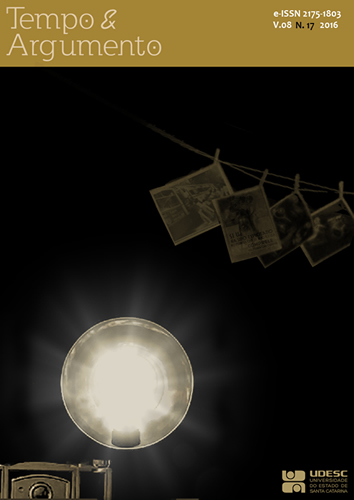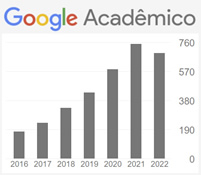The human and the inhuman: visual culture, political culture, and the images produced by George Rodger and Henri Cartier-Bresson in the Nazi concentration camps
Abstract
This article aims to grasp some aspects of the notion of humanism in photography and its closeness to the political culture and the visual culture in the period, through the specific experiences of George Rodger and Henri Cartier-Bresson, two photographers who were first-hand witnesses and provided accounts of horror in the Nazi concentration camps at the end of World War II. George Rodger photographed the Bergen-Belsen camp as soon as it was liberated by the British troops. Henri Cartier-Bresson was there with a film crew recording the deported masses newly freed from the Nazi concentration and extermination camps. These experiences came to have profound impact on the biography and work of both of them. In the two cases, there is a notion of humanism linked to World War II events, which is observed in photography and photographic representation, and it has a significant consequence for the contemporary visual culture.
Keywords: Visual Culture; Political Culture; War Photography; Photojournalism; Concentration Camps.
Original title: O humano e o desumano: cultura visual, cultura política e as imagens feitas por George Rodger e Henri Cartier-Bresson nos campos de concentração nazistas.
Downloads
References
ADORNO, Theodor. Dialética negativa. Rio de Janeiro: Jorge Zahar, 2009.
ARENDT, Hannah. Eichmann em Jerusalém. São Paulo: Cia das Letras, 2000.
ASSOULINE, Pierre. Cartier-Bresson, o olhar do século. São Paulo: L&PM, 2008.
BENJAMIN, Walter. Obras escolhidas: magia e técnica, arte e política. São Paulo: Brasiliense, 1996.
BERNARD, Bruce, MARLOW, Peter (Eds). Humanity and inhumanity: the photographic journey of George Rodger. London: Phaidon Press, 1999.
CARTIER-BRESSON, Henri. Scrapbook. London, New York: Thames and Hudson, 2007.
COOKMAN, Claude. Henri Cartier-Bresson Reinterprets his Career. History of Photography, v. 32, n. 1, spring 2008.
DIDI-HUBERMAN, Georges. Images in spite of all. Chicago and London: University of Chicago Press, 2008.
DIDI-HUBERMAN, Georges. Pueblos expuestos, pueblos figurantes. Buenos Aires: Manantial, 2014.
GALASSI, Peter. Henri Cartier-Bresson: the early work. New York: The Museum of Modern Art, 1987.
LANZMANN, Claude. A lebre da Patagônia. São Paulo: Cia das letras, 2011.
LOPES, Teresa Rita. Pessoa por conhecer: textos para um novo mapa. Lisboa: Estampa, 1990.
LOWE, Paul. Picturing the perpetrator. In: BATCHEN, Geoffry, GIDLEY, Mick, MILLER, Nancy K., PROSSER, Jay (eds). Picturing Atrocity: photography in Crisis. Reaktion Books, London, 2012.
MICHAUD, Philippe-Alain. Le film ou l’impensé photographique. In: CARTIER-BRESSON, Anne, MONTIER, Jean-Pierre (Eds). Revoir Henri Cartier-Bresson. Paris: Éditions Textuel, 2009.
MILLER, Russel. Magnum, Fifty years at the front line of history. New York: Grove Press, 1997.
MITCHELL, W. J. T. Showing seeing: a critical of visual culture. Journal of Visual Culture, v. 1, n.2, p. 165-181, 2002.
NAGGAR, Carole. George Rodger: an adventure in photography 1908-1995. New York: Syracuse University Press, 2003.
SCHABER, Irme. Gerda Taro : une photographe révolutionnaire dans la guerre d’Espagne. Monaco: Éditions du Rocher, 2006.
SEKULA, Allan. The body and the archive. October, v.39 (winter, 1986), pp. 3-64.
SELIGMANN-SILVA, Márcio (Org). Palavra e imagem, memória e escritura. Chapecó: Argos, 2006.
ZELIZER, Barbara. Covering atrocity in image. In: Remembering to forget: Holocaust memory through the camera's eye. Chicago: The University of Chicago Press, 1989.
ZERWES, Erika. Tempo de guerra: cultura visual e cultura política nas fotografias de Guerra dos Fundadores da Agência Magnum, 1936‐1947. 2013, 2 vols. Tese (doutorado em História) – Universidade de Campinas, Instituto de Filosofia e Ciências Humanas.





